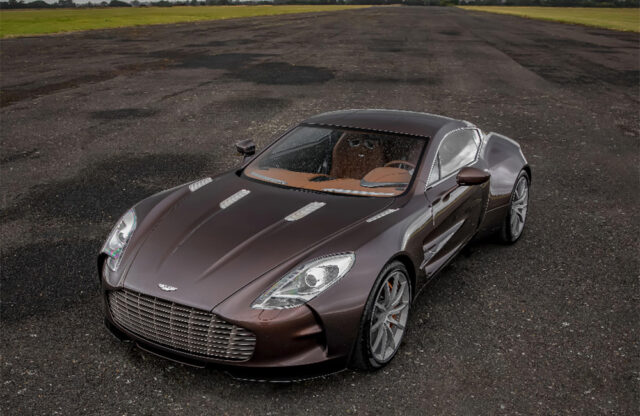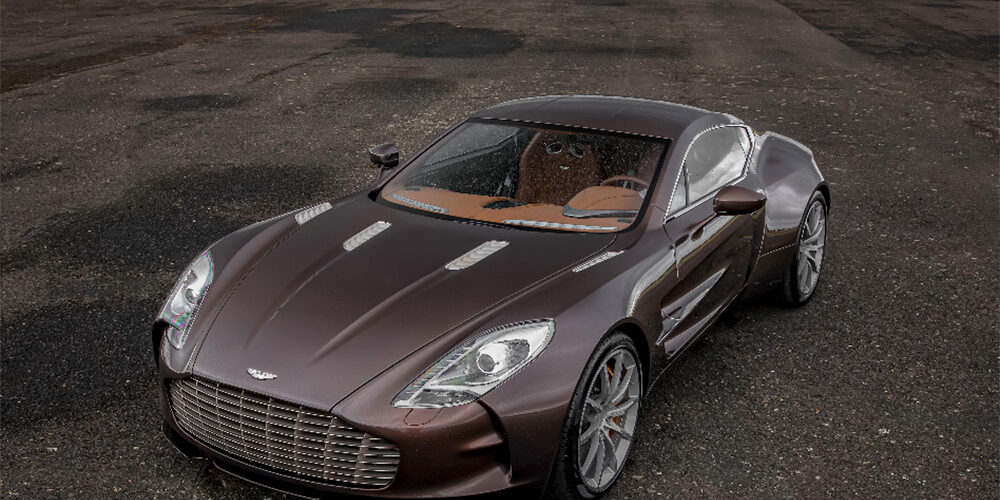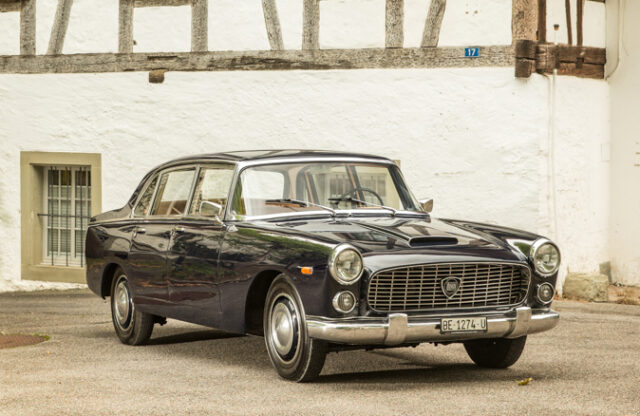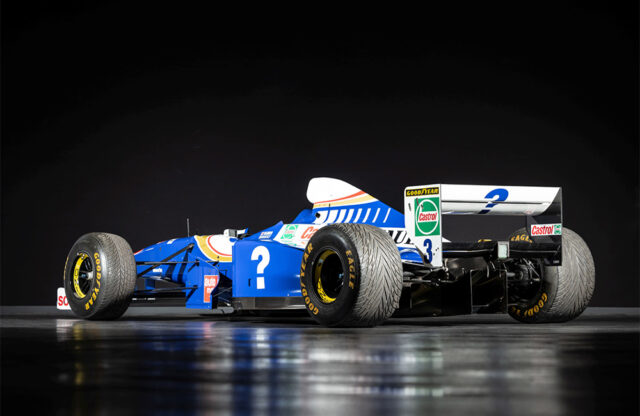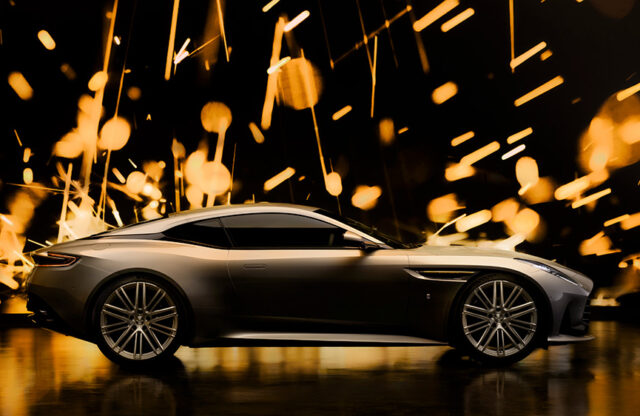Looking ahead to 2025’s auction season is harder than ever: as we discussed in Magneto‘s 2024 review, it’s been a turbulent time, with forces from within the hobby and outside having a deflating effect on the market.
But it’s not been an explosive year – and that is important to remember. Although the days of cheap finance and the post-Covid exuberance have gone, 2024 could be viewed as a case of realism re-entering the bidding room – and not just with regard to prices, and what people are willing to pay, but with the nature of the people in the market with purchasing power. The high-end Ferrari market is hurting, yet it could be argued that this had been a long time coming, with warnings from Europe from 2023.
2025’s auction season kicks off at Kissimmee with Mecum, but what are the big stories going into 2025, and what trends can we expect to see develop over the next 12 months.
Pre-1980s Ferraris – and pre-1980s everything
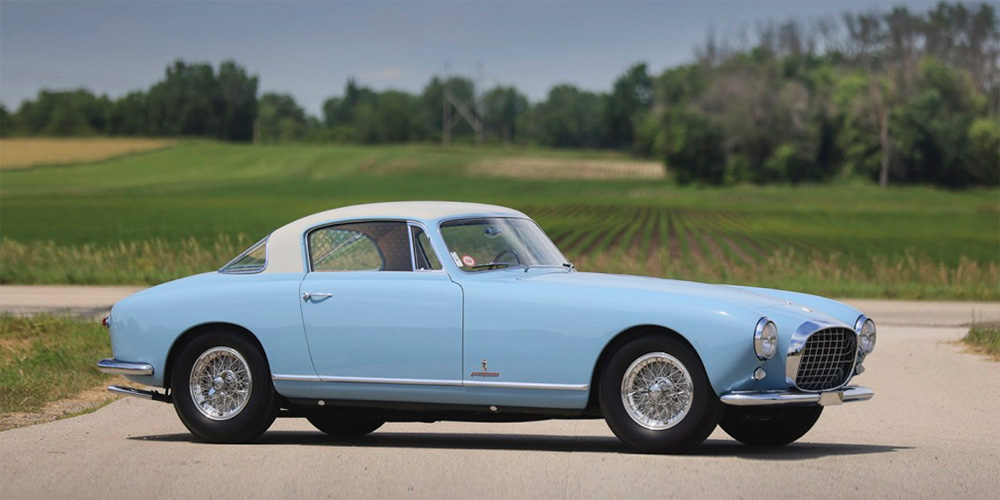
We’ve lost a lot of high-end Ferrari collectors over the past few years, and those still with us are perhaps seeing their buying appetites wane as the years pass and the opportunities to enjoy their purchases diminish. There is another problem – the enraptured ten-year-old of 1960 who fell in love with the epic duels between Ferrari, Jaguar, Aston Martin and many others is now 75. The question then becomes one of cultural relevance – and as such, I see further softening in prices of all pre-1980s cars. Not a bust, but a gentle decline as interest moves to younger classics.
Is there a way to combat this? Yes, but unless these cars are made relevant to a younger audience, why should they care? That seems like a remorselessly bleak statement – after all, the appeal of Led Zeppelin, the Sex Pistols, The Beatles and the Rolling Stones persist with newer generations, and the concept applies to other mediums. The key difference is that anyone can find and listen to these bands (and many others) easily and accessibly.
Over Christmas, I was reading an old Observer interview with veteran film director (and noted Ferrari enthusiast) David Cronenberg. When asked why fast cars fascinated him so much, he replied: “If you see a Lamborghini or a Ferrari driven at speed, it’s pretty impressive, it’s like an animal, there’s a beauty to it. I could go on and on about the beauty of the now-outmoded internal-combustion car, but there was a prehistoric magnificence to them… If you are just watching them from your balcony on a highway, then of course it’s boring.”
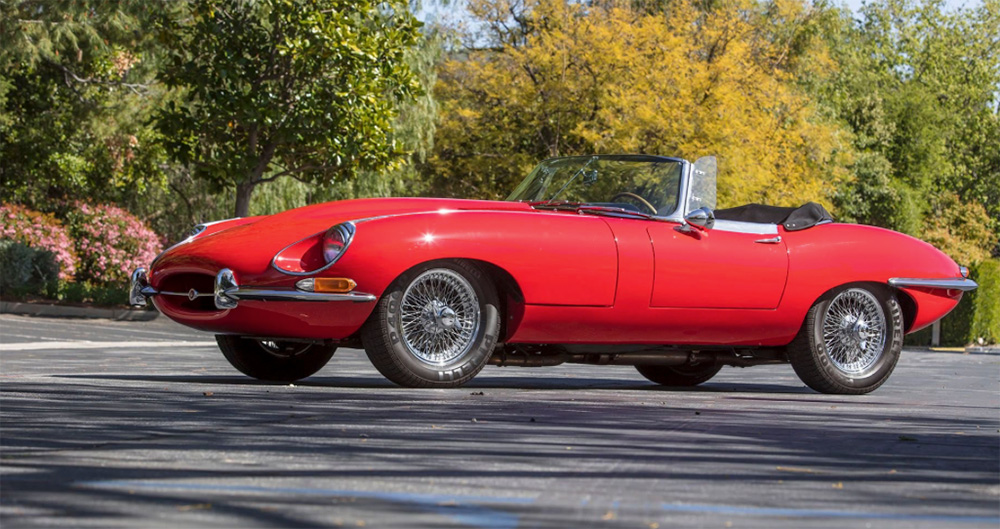
This, perhaps, gives an answer to how the high-end Ferrari world needs to approach this situation. A static Ferrari in a collection, or even on a manicured lawn, is just an exhibit. Much in the same way, the Revolver album sleeve may be a fascinating piece of work but the true power of that album comes from listening to it. Pretty as any 1960s Ferrari, Jaguar, Maserati or Aston Martin might be, they were built to be driven, heard, smelled and experienced.
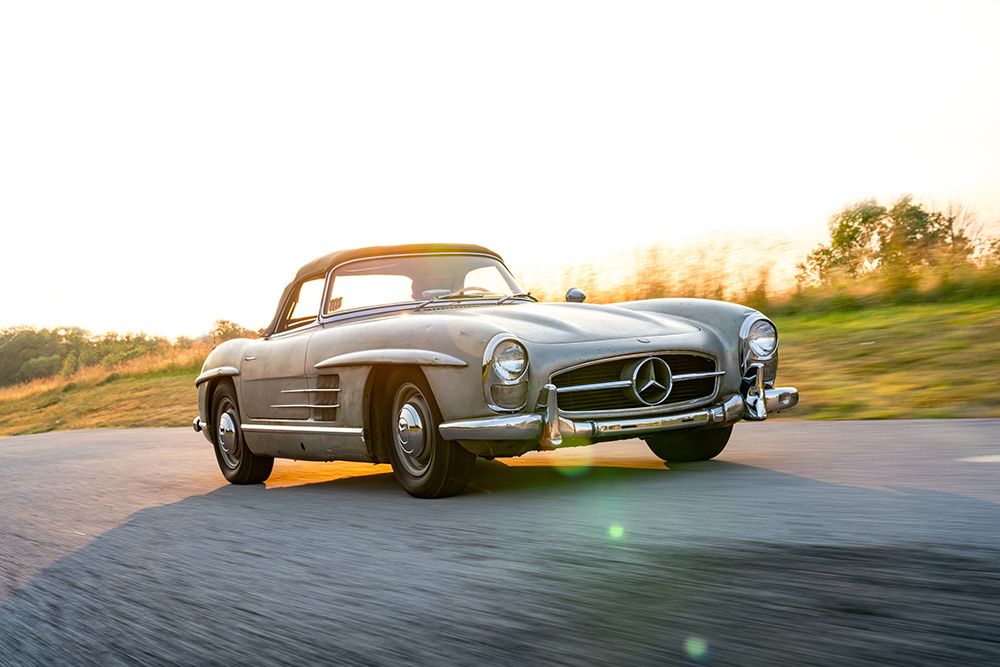
It is something that Mercedes-Benz and Porsche know only too well from a manufacturer level – it is a potent tool to leverage new-car sales and enthusiasm; as the world goes increasingly electric, such dedication to history is a key differentiator against the rise of new Chinese manufacturers entering European and American marketplaces. The flip side to all this is that the classic cars themselves remain relevant to younger generations – the cult of 911 is king on social media, and the knock-on effect on prices on classic models is there to see, whether bone-stock or resto-modded. Another good example is the Mercedes-Benz 300 SL Gullwing and Roadster – for a car launched in the 1950s, its appeal remains strong to this day, with 2024 auction results backing that up.
So, in short, pre-1980s cars may continue to decline, but the onus is on the owners and custodians to make people feel, smell and hear why they should care – all the good things an EV simply can’t do. Something to consider for 2025’s auction season and beyond…
On the noughties step
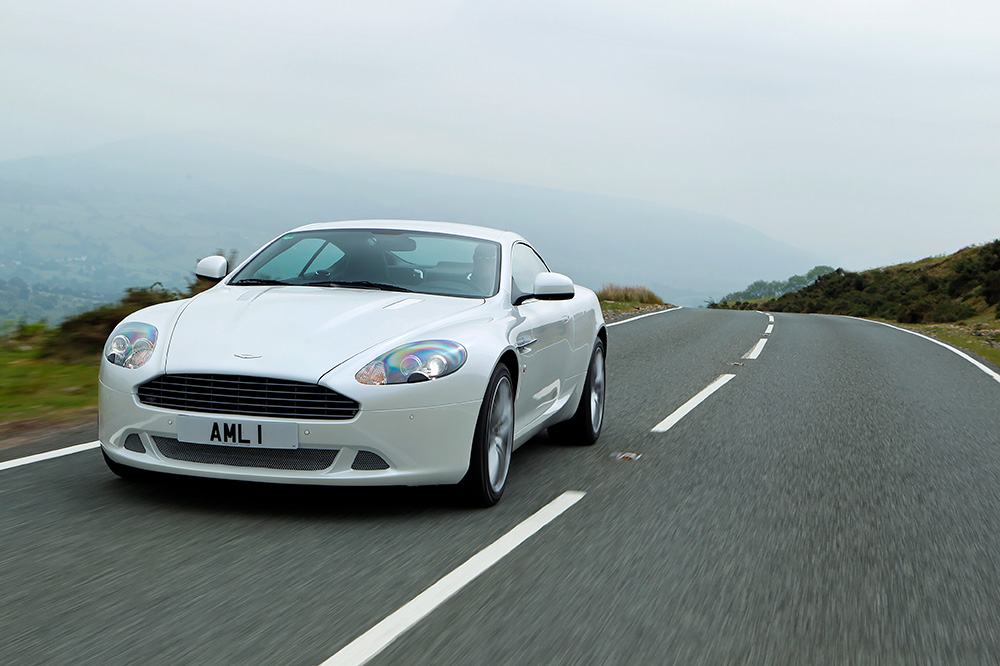
The new-car market is in peril, the EV revolution is stuttering, major car-manufacturing conglomerates are staring at the abyss. Even Ferrari is facing a tepid response to its latest hypercar, while things are quiet on the all-EV Porsche hypercar front.
This all brings us neatly to the 2000s, a time when an EV was an abstract concept at best, manual gearboxes were still relatively common, hydraulic steering racks were still the first choice and naturally aspirated big-cube engines were not merely allowed, but the key part of an engineering arms race in Germany. V10 engines in BMWs and Audis? It seems like so long ago…
Well, that’s because it was. It’s now 25 years since the 21st century kicked into life, which means a whole new era of classic cars comes into being, along with a new raft of ‘is it really a classic’ debates on the internet.
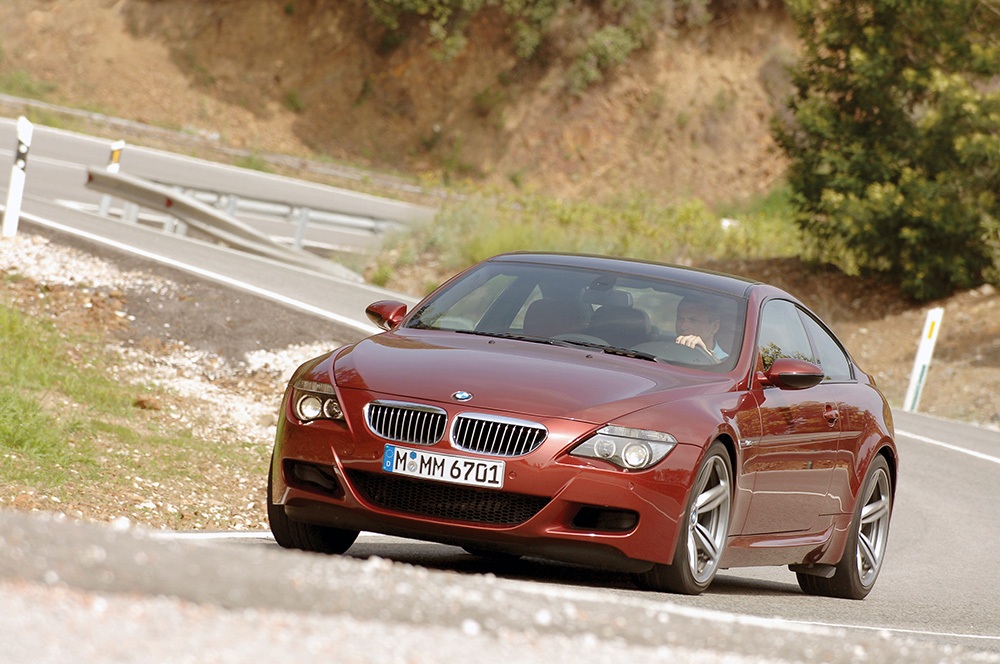
The key differentiator is that, by the 2000s, most manufacturers had honed their cars to the point of perfection. With a handful of exceptions, daily driving even a late-1990s model will be challenging, while many ’00s cars are more than up to the task, not least thanks to extensive galvanisation.

Although the classic market is firming up for 2000s cars, much of its focus has thus far been on burgeoning ’80s and ’90s examples. However, the 18-year-old of 2000 is now approaching prime classic-buying age, and some of the more mass-produced exotics are yet to rapidly advance in price in the manner of their forebears. Look at how cheaply you can acquire a Bentley Continental GT, BMW M6, Porsche 996/7 Turbo, Maserati GranSport, Jaguar XKR or Aston Martin Vantage/DB9…
These will be more reliable than the cars that preceded them – and arguably those that followed, thanks to the added complication and maintenance costs associated with increasing emissions and safety regulations. Even a Ferrari 360 or 430 remains remarkable value for money that will not only drive far better than their predecessors, but will be easier to look after, too. Not necessarily cheaper, mind – V10 BMW ownership and maintenance is not for the easily scared.
As it stands, there are many exceptional cars that are at the bottom of their depreciation curves; some insurers still struggle with the concept of them as true classics. But put it this way: a 25-year-old model, 25 years ago, certainly would have been viewed as one.
On that note, two cars to watch
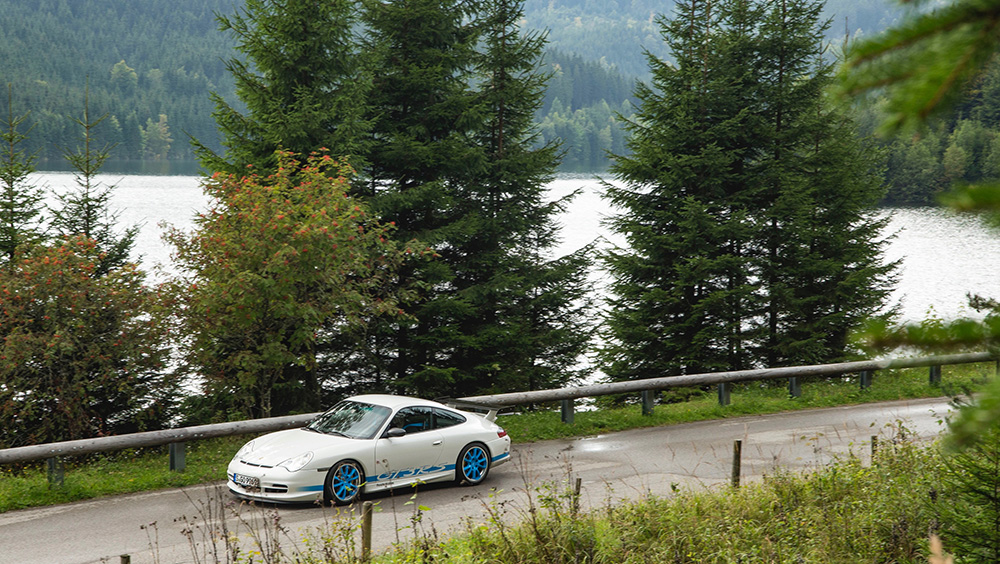
2024 might have been a bruising year in America, but it is still the land that does much of the business, and the 25-year importation rule remains an important one. One needs only to look at the spikes in values for the BMW M3 E30, Lancia Delta Integrale, Nissan Skyline GT-R R34 and Ford Escort RS Cosworth for the auction allure of forbidden fruit. So what’s worth looking at for 2025’s auction season?
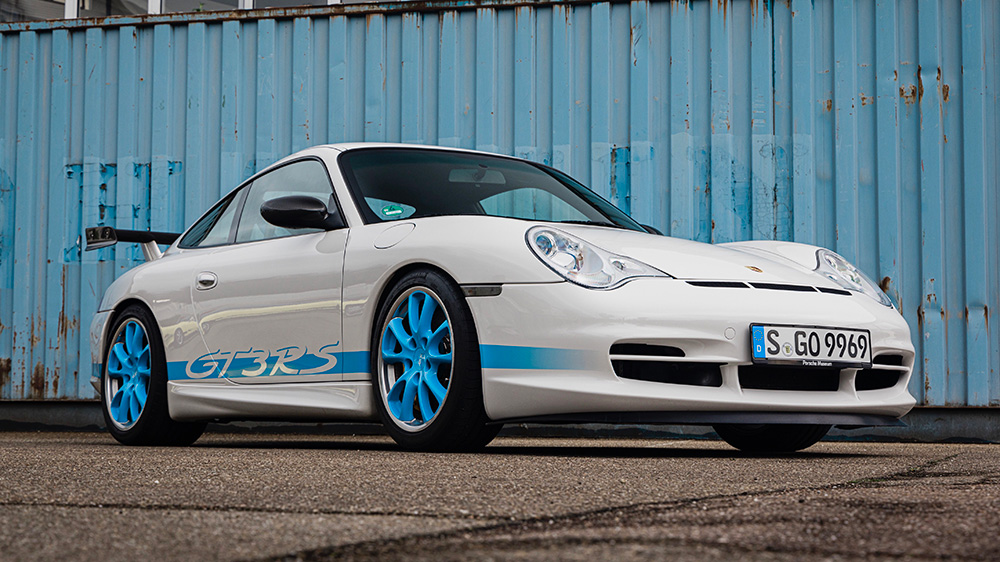
The first suggestion is the above Porsche 996 GT3 RS, which wasn’t offered to American and Canadian customers. The second-rarest variant of the GT3 RS line behind the venerated 997 RS 4.0, it was the first watercooled RS model, and as such represents the starting point for the current RS lineage. Just 682 were built, with a polycarbonate rear window, and a carbonfibre bonnet and rear wing for lightness, carbon-ceramic disc brakes for stopping power, lower, stiffer and adjustable suspension, and a retuned engine that Porsche says produces the same 381bhp as the standard GT3, although some sources put it as closer to 400bhp.
The RS was launched in 2003, so you’ll have to wait three years to drive it in the US, but look at how Skyline R34 prices skyrocketed far in advance of its age-of-usability date. Although the GT-R cult is arguably much more passionate and much larger than that of the 996 GT3 RS, the Porsche is considerably rarer than the Nissan. Worth keeping a close eye on European auctions? I’d say so.
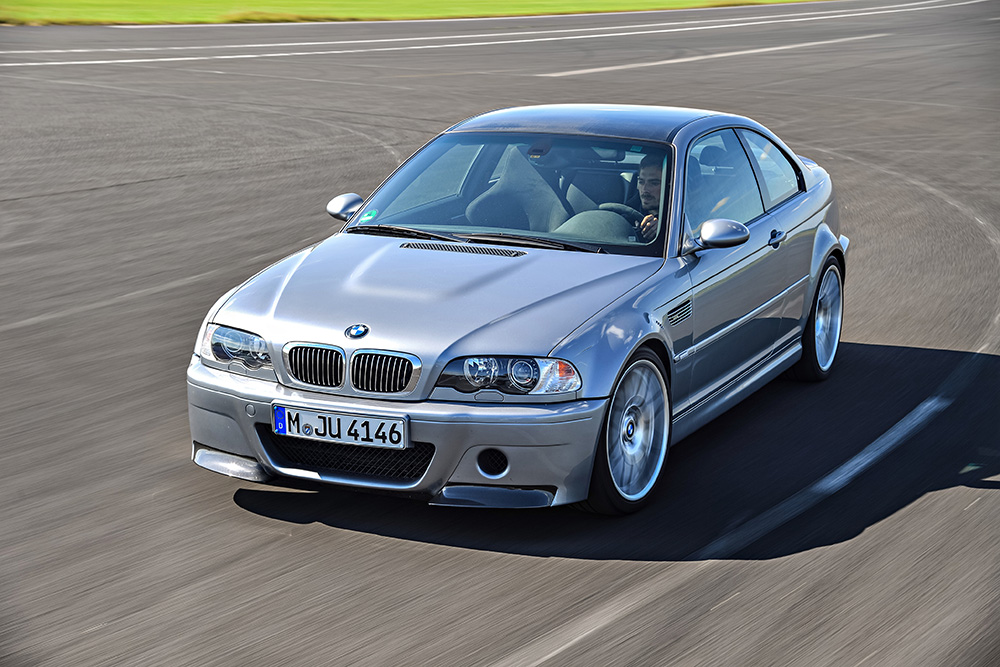
The second one to watch is the 2004 BMW M3 CSL. As with the 996 GT3 RS it is a honed, lightened and stiffened version of a different car that was imported to the US – but this one wasn’t. It has a revised rack that transforms steering feel, advanced lightweighting throughout the car that also lowers the centre of gravity, and a retuned 360bhp straight-six that screams through a carbon airbox, among other extensive modifications. It is a very different experience to a standard M3, and although not quite as rare as the 996 GT3 RS, at 1383 built it is hardly common. Prices for CSLs took a huge leap upwards around five years ago – and as we get closer to 2029, I wouldn’t be surprised if prices take a further hike northwards during 2025’s auction season.
Broad Arrow to the heart of Europe
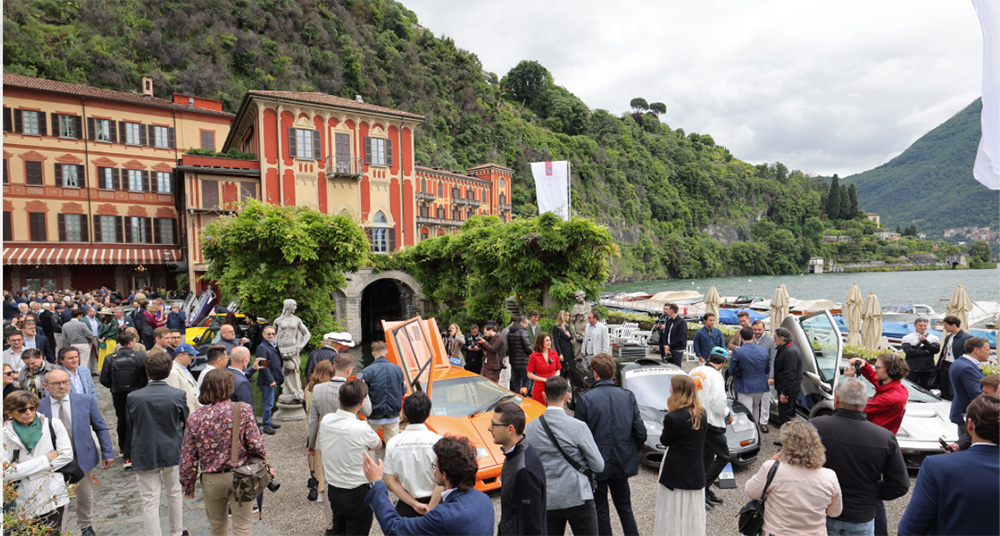
If ever there was a way to make big statement as to your global ambitions, this was it – Broad Arrow has taken the coveted auction spot at the Concorso d’Eleganza Villa d’Este. RM Sotheby’s had mixed results at its 2023 auction – it’s where we first really saw the downturn in the Enzo-era Ferrari market writ large – so success isn’t necessarily guaranteed. The European market has been much chillier than the US one for much longer, although there were some promising results from Bonhams towards the back end of 2024. However, storm clouds could be on the horizon – intra-European importation costs have already increased into the Netherlands, and France could follow suit.
As we report in the next issue of Magneto, Broad Arrow’s European expansion is not being taken lightly, with a dedicated site at Bicester Heritage in the UK, for example. However, the auction market is busier than ever, with online portals galore. It’ll make for a fascinating sale.
Gooding and Christies… and Bonhams
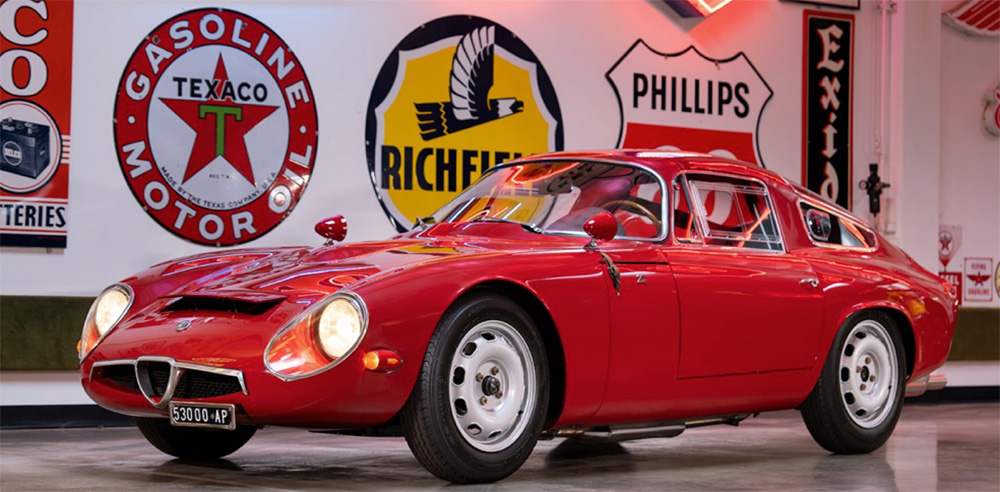
The merger between Gooding and Christies will be a big story for 2025’s auction market. Gooding & Co has developed a formidable reputation, so it will be interesting to see how much being absorbed into a much bigger auction house will impact on its day-to-day running.
In the case of RM Sotheby’s, the absorption has gone well – but in the case of Brooks/Bonhams… well, the past two years have not been great, although we did see some rallying towards the end of the year, particularly at its Zoute sale. There have been flurries of success, but last year was one of poor results, particularly in the most profitable $1m-plus market.
For Gooding & Co, it’s more of a return home – and its founder knows the ropes; Christies, for its part, has also invested in more staff and logistical back-up to ease the transition. With the ability to cross-pollinate with other departments in the Christies empire, the potential is there for a wider pool of customers. 2025’s auction season could be the one where cross-pollination between departments takes an even bigger step forwards; it’s something RM Sotheby’s has had success with in recent times, expanding the repertoire to watches and art.
RM Sotheby’s brings the big guns
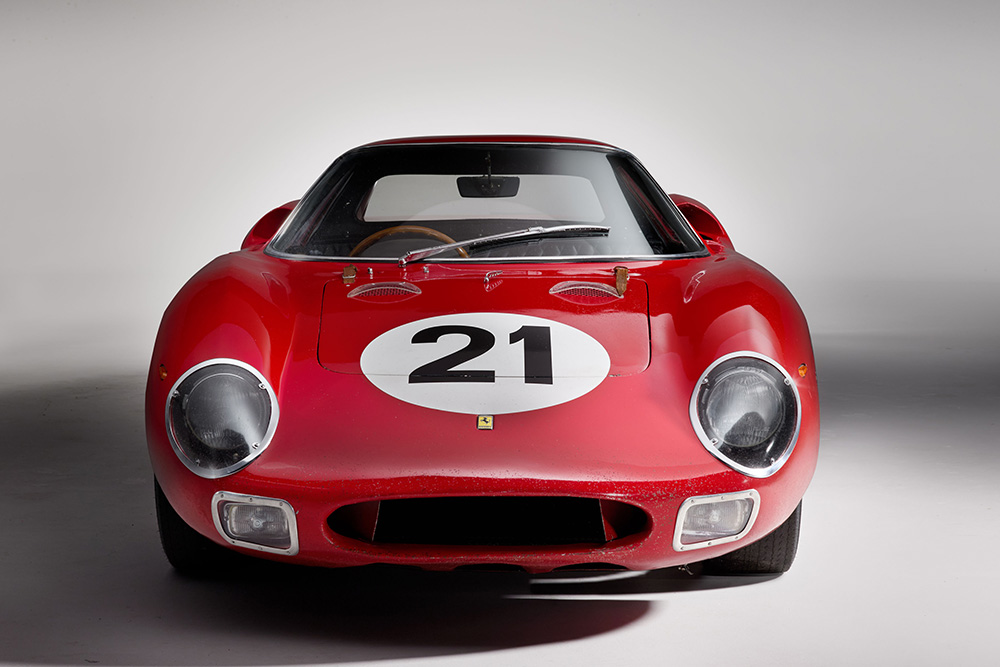
Last year, RM Sotheby’s arguably cornered the market in big-ticket, big-news sales events; from the Klein Collection to its ModaMiami counter event to The Amelia, and two new British sales, the big headlines usually had RM Sotheby’s name attached to them. The classic car division was a rare highlight for the broader Sotheby’s group, which saw earnings fall 88 percent in the first half of 2024 due to weakening Chinese demand.
It’s not all been plain sailing, however: those British auctions weren’t exactly an amazing success, with the market turning away from both project cars and 1950s-60s British marques. Both sales had quite a lot of both, often wrapped up into one lot. RM also wasn’t immune from the Monterey malaise that afflicted all auction houses. It was, however, a broadly successful year in terms of sales and perception.
The campaign continues into 2025, with RM’s formidable relationship with manufacturers and institutions bringing forth two of the biggest stories of 2025 – and its auction diary for the rest of 2025 past February isn’t published yet. After the Arizona sale, it’s a bumper Paris sale with an enormous and enticing Curated collection sale of largely modern classics.
There’s plenty to take in – and we’ll be previewing the Paris sales in detail in a couple of weeks’ time – but the biggest lot is the above 1965 Le Mans 24 Hours Ferrari 250 LM from the Indianapolis Motor Speedway Museum collection. It’s the only Ferrari built during the Enzo Ferrari era to compete in six 24-hour races, including three times at Le Mans and three times at the Daytona 24 Hours, and was displayed by Luigi Chinetti Motors/NART at the 1967 New York Automobile Show.
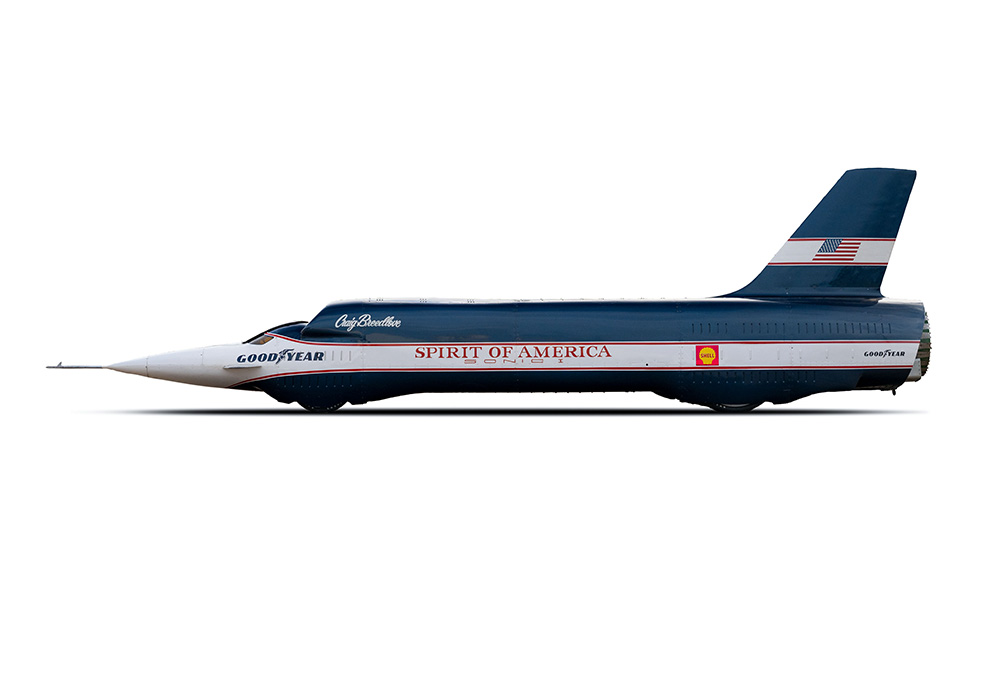
The bulk of Indianapolis Motor Speedway Museum lots, including such historic cars as the 1966 Ford GT40 driven to second place at the Sebring 12 Hours by Mark Donohue and Walt Hansgen, the 1908 Mercedes 17.3-litre 150HP ‘Brookland’ Semmering Rennwagen and Craig Breedlove’s 1965 Spirit of America Sonic I, will be sold at RM’s Miami event at the tail end of February.
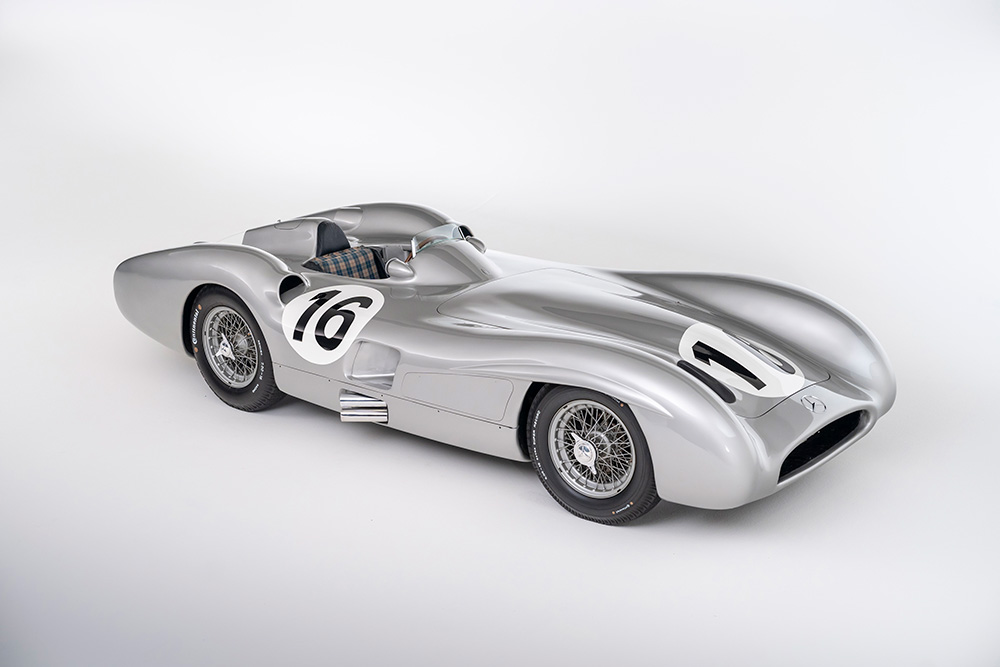
Before all that, however, comes the sale of the 1954 Mercedes-Benz W 196 R Stromlinienwagen, one of four known complete cars with the Stromlinienwagen body at the end of the 1955 season. It was driven by Stirling Moss at the 1955 Italian Grand Prix at Monza, achieving fastest lap, and Juan Manuel Fangio took it to victory at the 1955 Buenos Aires Grand Prix. It’s estimated at more than €50m, and is up for grabs on February 1. 2025’s auction season is certainly starting hot…
Online portals vs dealers: is the tide turning?
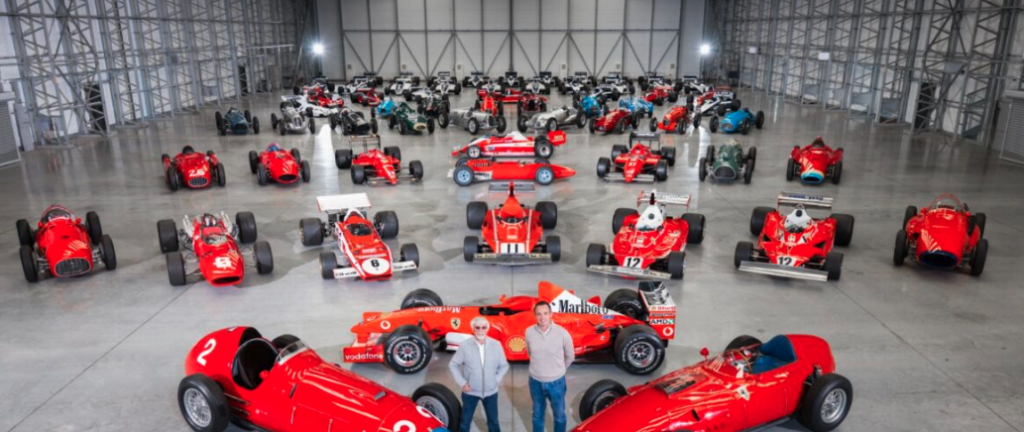
A lot can happen in five years – the boom in online auction marketplaces cut a swathe through the traditional classic and prestige marketplace. Where once there were many ‘prestige’ dealers with cars on sale or return (SOR), the on-paper – well, on-email – simpler option of popping it on an online portal, for significantly lower fees, and with less waiting around… was just hard too ignore for many sellers. For them and buyers, the fees were often much smaller than traditional ‘event’ auctions, and stock could be liquidated quickly – soon, a good proportion of the traffic on such sites was taken up by dealers themselves, snapping up bargains and shunting cars out of the door. Some shifted into curating online auction sales for customers, rather than selling them directly.
The knock-on effect for prestige dealers was seismic – the traditional business model of a wide-ranging stock, plus SOR, was hard to justify. The bigger dealers leveraged their infrastructure and buying power in the prestige/supercar market, while classic dealers – and the clever smaller dealers – found their marque niches.
The online picture for 2025’s auction season isn’t quite as glossy. Numerous complaints about various big-name online portals from buyers and sellers have been fermenting for some years, and from anecdotal reports several of the said portals have seen a dramatic reduction in consignments, particularly in the UK.
There’s also another factor – there are more auction portals than ever to choose from, plus a huge number of bricks-and-mortar auctions throughout the year. Simply put, there aren’t enough truly good cars to go around, and in the UK at least, not enough buyers at the moment. As I mentioned last year, several weekends throughout the year had six to eight physical auctions at the same time, plus the internet portals. It’s certainly a buyers’ market, but with results far from lofty estimates, this has to hurt the auction houses’ per-car profits, as well as their reputation. Some have expanded aggressively overseas as a way to avoid the UK-centric problems, which has kept the throughput going, but it could well be that the circle is beginning to return to the dealer model.
A good example of this is the Tom Hartley Jr sale of the Bernie Ecclestone Collection. This could have been quite the coup for any auction house, online or otherwise, but the nature of these cars requires an expert touch, a well connected sales team, and a level of care in administration that, quite frankly, a webpage and a chatbot can’t compete with.
Big-ticket cars continue to be sold through online auction portals, but largely of the modern hypercar persuasion. Collecting Cars scooped a huge coup with the first auction appearance for an Aston Martin Valour, for example, and set record prices for a number of cars throughout the year – but again, largely for the modern performance/supercar market. The auction-portal model will not go away, and there will now always be a market for it. But for the classic realm, could this be the year in which dealers claw back their edge? With a focus on customer care, knowledge and patience, 2025’s auction season could well be a chance for dealers to prove their worth…
